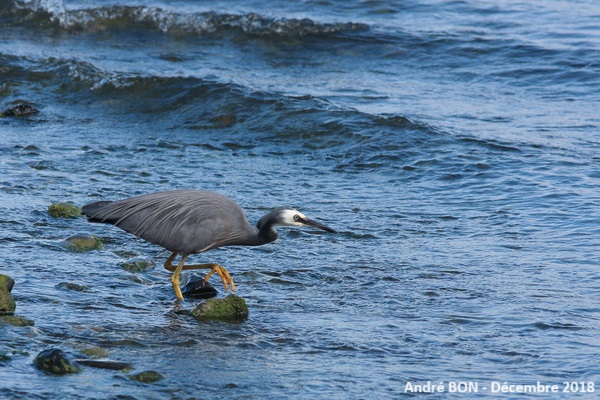
| White-faced Heron (Egretta novaehollandiae (Latham, 1790)) |

|
|
Scientific name: Egretta novaehollandiae (Latham, 1790) Common name: White-faced Heron Other names: White-fronted Heron. French name: Aigrette à face blanche, Aigrette australienne. Order: Pelecaniformes Family: Ardeidae Size: Body size: 65 to 69 cm; Wingspan: 100 to 110 cm; Weight: 500 to 550g. Habitat: Wide variety of habitats always located near shallow, fresh or salty water, swamps, mangroves, banks of lakes and rivers, damp meadows. Food: Fish, crustaceans, insects, amphibians and small reptiles caught in shallow water. Nesting: The White-faced Heron nests solitary or in very small groups. The nest, placed quite high in a large tree, is a platform of twigs about 40 cm in diameter. There are several broods of 2 to 5 eggs per year. Migration: Sedentary. Geographic area: Australia except very dry regions, Indonesia, New Guinea, New Caledonia, New Zealand. |
The White-faced Heron has an overall fairly dark grey-blue plumage. The face, from the forehead, around the eye and up to the chin is white. The lores are dark. The upper chest has a tuft of light brown feathers. The underside is light grey. In breeding plumage, the head, neck and middle of the back have long feathers that do not extend beyond the tip of the tail. The bill is black, long, straight and pointed. The legs are yellowish. Juveniles have much less white on the face and can be confused with the Pacific Reef Heron (Egretta sacra). They lack the light brown feather tuft on the chest and the underside of the body is more brownish. |
| [To know more about the White-faced Heron] [Top] |

|
I observed this White-faced Heron in salt water, on the edge of the arm of the Pacific Ocean which borders the village of Akaroa. |